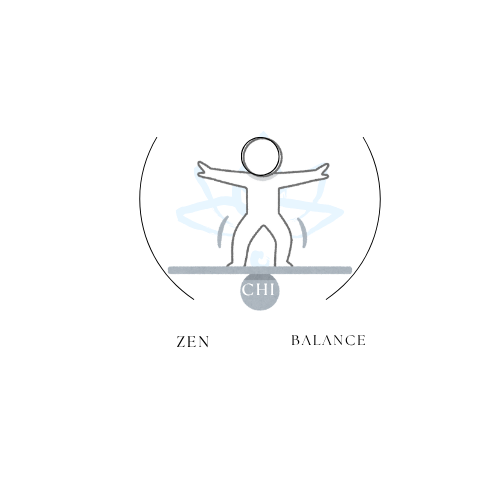
Inner Calm Pathways for Focus, Resilience, and Ease
Share
Updated on: 2025-10-23
- What inner calm means for inner peace and inner serenity
- Why inner calm matters in everyday life
- Key benefits of inner calm for balanced living
- How to cultivate inner calm in daily life
- Mindfulness moments you can try anywhere
- Gentle boundaries for supportive stress management
- Digital pauses to reduce mental clutter
- Breathing techniques for inner calm during stress
- Box breathing
- Extended exhale breathing
- Grounding breath with cue words
- Step-by-step guide to reset to inner calm in minutes
- Step 1: Arrive where you are
- Step 2: Lengthen your exhale
- Step 3: Soften the body
- Step 4: Name what you feel
- Step 5: Choose one kind next step
- Questions about inner calm: practical answers
- How can I achieve inner calm quickly?
- What practices help maintain inner calm under pressure?
- How often should I practice to feel inner calm?
- Summary: Sustaining inner calm with mindful habits
- About the author
Inner calm is the steady, centered feeling that helps you meet life as it comes. When inner calm is present, you may notice more space between a challenge and your response, a softer inner tone, and an ease that supports inner peace and inner serenity. This article offers simple ways to nurture inner calm, including mindfulness, stress management tools, and breathing techniques for inner calm during stress. The suggestions are gentle, practical, and meant to be tried in small steps that fit your day.
What inner calm means for inner peace and inner serenity
Inner calm does not mean a life without stress. Instead, it is the capacity to remain steady and kind toward yourself in the middle of change. You can think of it as a quiet base camp. From this base, you can listen more clearly, decide more thoughtfully, and recover more smoothly. Inner calm often supports inner peace and inner serenity, and it can grow through consistent, small practices.
Why inner calm matters in everyday life
In daily life, inner calm can help you pause before reacting, express your needs more respectfully, and conserve energy for what matters most. It may also make routines feel more manageable. While outcomes vary for everyone, many people find that a calm base supports steadier choices, less mental clutter, and a kinder relationship with time.
Key benefits of inner calm for balanced living
- More thoughtful responses: A steadier mind can create a small gap between stimulus and response.
- Clearer priorities: Calm attention helps you notice what truly matters in the moment.
- Kinder self-talk: Inner calm often shifts the inner voice toward patience and care.
- Smoother transitions: Routines such as starting the day or unwinding in the evening may feel gentler.
- Support for inner peace and inner serenity: A calm base can make reflective practices more accessible.
How to cultivate inner calm in daily life
If you are wondering how to cultivate inner calm in daily life, it can help to start small. Choose one simple practice and try it at the same time each day. Over time, the consistency may matter more than duration. You might also explore helpful resources. For example, if you wish to learn more about the values behind this approach, you could visit the About page. If you prefer to browse supportive tools and gentle accessories that complement a calm routine, you are welcome to look at Shop all. If you have questions or wish to share feedback, the Contact page may be helpful.
Mindfulness moments you can try anywhere
- Notice your feet: Feel your heels, arches, and toes making contact with the floor. Name the sensation quietly.
- Single-task for one minute: Choose one small task and give it your full attention. When your mind wanders, kindly return.
- Look up and soften your gaze: Rest your eyes on a stable point in the distance to give your attention a brief reset.
- Transition breath: Before opening a door, starting a call, or sending a message, take one slow breath in and one longer breath out.
Gentle boundaries for supportive stress management
- Set “enough” for today: Decide in advance what “done for now” looks like. It can be modest and clear.
- Time-box transitions: Give yourself a small buffer between tasks—perhaps two minutes of quiet or a short walk.
- Use kind defaults: Prepare simple meals, lay out clothes, or keep essentials in one place to reduce decision load.
- Request soft accountability: Ask a supportive friend to check in with a simple, encouraging message.
Digital pauses to reduce mental clutter
- Silence non-essential alerts for set periods.
- Move distracting apps off your home screen.
- Choose a daily “off” window—perhaps during meals or the first 30 minutes after waking.
- When scrolling, pause after a few minutes and ask, “Is this adding calm or taking it away?”
Breathing techniques for inner calm during stress
Breath can be a gentle doorway to inner calm. The practices below are simple, portable, and brief. You can adapt counts to your comfort.
Box breathing
Inhale for a comfortable count, hold softly for the same count, exhale for the same count, then pause gently before the next inhale. Try a 3-3-3-3 rhythm. This even pattern can feel steady and grounding.
Extended exhale breathing
Inhale through the nose for a comfortable 3, then exhale through the mouth for 5 or 6. The slightly longer exhale may invite a sense of release. Keep the breath smooth and unforced.
Grounding breath with cue words
Choose two calm words that feel supportive, such as “soften” on the inhale and “settle” on the exhale. Repeat them silently to give your attention a gentle anchor.
Step-by-step guide to reset to inner calm in minutes
This brief sequence is a kind way to return to center when life feels fast. Move at your own pace, and adjust any step to fit your needs.
Step 1: Arrive where you are
Pause. Let your shoulders drop a little. Feel the contact beneath you—feet on the floor, or seat on the chair. If helpful, place one hand on your chest or belly.
Step 2: Lengthen your exhale
Breathe in through your nose, then out through your mouth a little longer than the inhale. Repeat for three to five rounds. Keep the breath soft and comfortable.
Step 3: Soften the body
Unclench the jaw, relax the forehead, and release the tongue from the roof of your mouth. Let your hands rest. Notice any small shift in ease.
Step 4: Name what you feel
Quietly name your experience with simple words, such as “tense,” “tired,” or “rushed.” Naming can bring clarity and gentleness to the moment.
Step 5: Choose one kind next step
Pick a single, respectful action that fits the moment. It could be returning to your task, getting a glass of water, or sending a short message. Small and clear is often enough.
Questions about inner calm: practical answers
How can I achieve inner calm quickly?
A short reset can help. Try two slow breaths with longer exhales, soften your shoulders, and place your attention on your feet. If time allows, follow the step-by-step guide above. Even one minute of focused breathing can feel supportive. You might also bookmark the Home page to return to helpful reminders when you need them.
What practices help maintain inner calm under pressure?
Choose one simple anchor you can rely on, such as extended exhale breathing or a brief body scan. Set kind boundaries around workload when possible, and add short transition pauses between tasks. Consistency tends to be more helpful than intensity, so aim for steady, small practices you can keep.
How often should I practice to feel inner calm?
Daily is helpful, but frequency can be flexible. You might start with one minute in the morning and one minute in the evening, then add a short pause before a task that matters. Over time, small regular moments can make inner calm feel more accessible when life becomes busy.
Summary: Sustaining inner calm with mindful habits
Inner calm grows through simple, kind attention. A few steady habits—brief mindfulness, gentle stress management, and accessible breathing techniques—can support inner peace and inner serenity in a realistic way. Start with one small practice, allow it to become familiar, and add more as it feels right. This respectful approach keeps calm within reach, even on full days.
About the author
Written with care by the team at Kai Zen Chi Balance. We create thoughtful resources that support gentle routines and mindful living, with a focus on simple, sustainable practices you can use every day.

I'm a passionate curator at Zen Chi Balance, dedicated to spreading calm, harmony, and mindful living through faith-inspired lifestyle products. I help craft meaningful experiences for our global community of mindful shoppers.
The content provided is for informational and inspirational purposes only. It is intended to encourage personal growth, mindfulness, and balance in daily life. Zen Chi Balance does not provide medical, legal, or professional advice. For specific concerns or guidance, please consult a qualified professional. Visit us at www.zenchibalance.com for more inspiration and resources.
